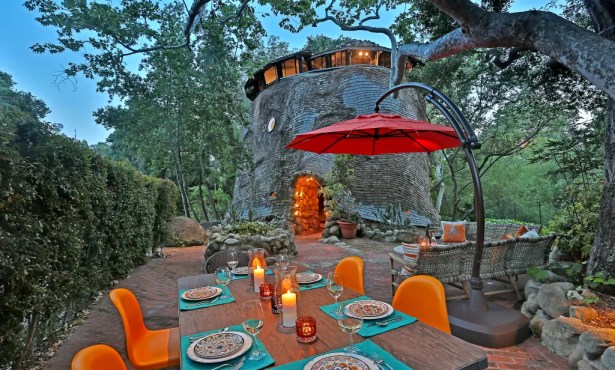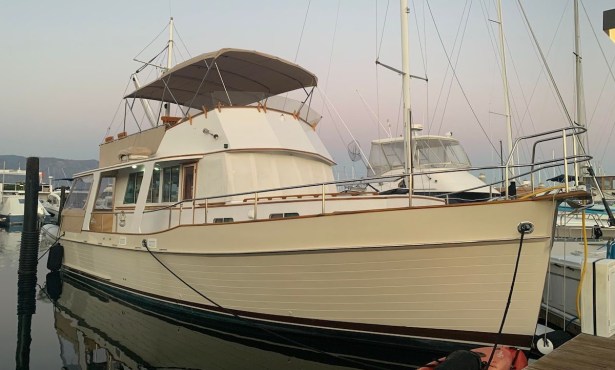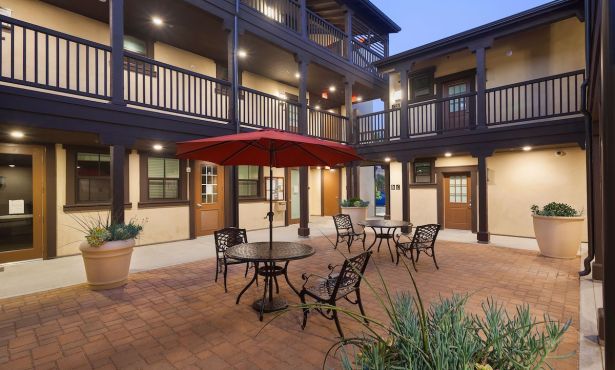Make Myself at Home: ArchitecTours to Visit Jorgensen Ranch House
Remodeled Adobe Part of Annual Tour That Showcases the ‘Spirit of Santa Barbara’
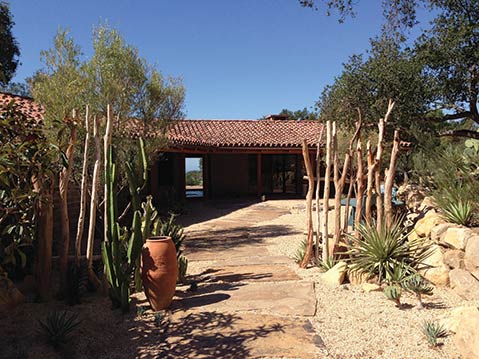
Status: Not For Sale
As I walked toward my car after touring the Jorgensen Ranch House last week, the owner came back outside, and asked, “By the way, did you want to see the studio? I’m sorry I forgot to ask you earlier.” I felt as if perhaps I had already overstayed my welcome. The house had so many interesting details, and I had the unexpected pleasure of having both of the owners there to show me around. We had gotten to chatting on many different subjects, and I asked a million and one questions about everything from the bathroom sinks to the proposed office wall paint colors to the reasons behind the decisions they made when they were remodeling.
However, since he asked about the studio, of course I said yes. The studio is a converted garage that’s in a separate building. As it turned out, the studio featured one of the best sneak peeks of the day.
In fact, the entire visit to the Jorgensen Ranch House was a sneak peek. It is one of seven properties that can be visited on October 1 during the eighth annual ArchitecTours, which is open to the public and provides a behind-the-scenes look at various residential and commercial properties. Some, such as the Jorgensen Ranch House, are historically significant, while others are more contemporary. The tour is presented by the Santa Barbara chapter of the American Institute of Architects with the goal of making architecture more accessible to the public. Architects from each of the projects will be on hand to answer questions and discuss the challenges and solutions involved in designing the sites on the tour.

With this in mind, I didn’t feel guilty asking my zillion questions. The house itself is a one-story adobe brick residence, designed in the 1950s by architect John Ward Pitman before he even received his license. It was designated as a “Structure of Merit” by the City of Santa Barbara in 2009 and purchased by its current owners in 2011.
The house was remodeled extensively, but as you walk through it today, it’s not apparent at first glance which parts of the house are original and which are new. The front door opens onto the expansive great room, with the living room to the right, dining area straight ahead, and a gorgeous open kitchen to the left. The main focus, however, is straight through the house. The wall beyond the dining room is an architectural marvel, with a 120-degree angled door opening onto the back patio and the view beyond. This NanaWall door folds onto itself, letting more of the outside in and allowing the focus to be on the view rather than the door. This view includes beautiful native landscaping and terraced gardens that blend into the surroundings.
Back inside, the beautiful dining room set stopped me in my tracks. Designed by woodworker John Spivey, the naturally gleaming table and chairs are works of art. I appreciated them even more after sitting in one of the chairs; their function is just as enviable as their form. Spivey’s influence is seen throughout the house, including thick wood bathroom sink surrounds and shelving.
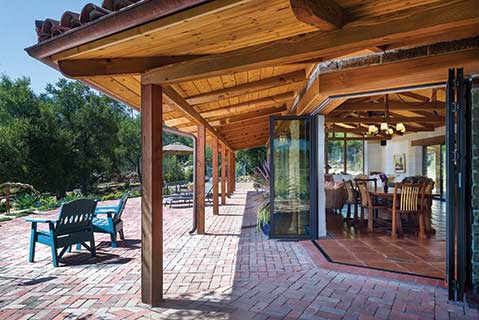
We wandered through the kitchen and family room and to the downstairs office. The master suite, with its view from the bathtub onto the back patio and the canyon beyond, is undoubtedly my favorite part of the house. Although this portion of the house is new, with more than 1,100 square feet added in the remodel, it blends seamlessly with the style and lines of the original house.
I was treated to first-hand details of the extensive remodeling experience. The original kitchen door was recycled for use in the new family room, and other touches melding the old and new are evident. Deep tile windowsills in many of the rooms show off the thick adobe walls and echo the beautiful Saltillo tile flooring throughout the home. Natural materials abound, including the wood-beamed ceilings. Admiring the ceilings leads to stories of the sandblasting that went into uncovering the natural wood beneath the dark finish that had been added by a previous owner.
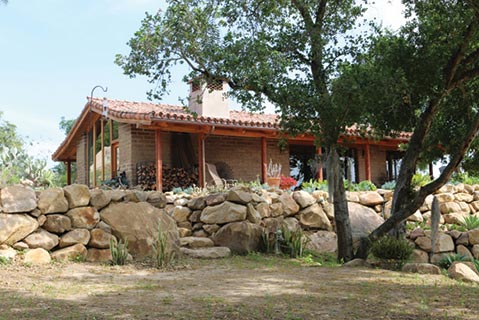
There appeared to be some distinct differences of opinion between the two owners about how much was too much when it came to revealing the natural beauty of the house. This was most apparent in our visit to the studio — the aforementioned portion of our tour that almost didn’t happen. Not only had the natural wood been uncovered from the ceiling beams, but part of one wall was also boldly stripped to reveal the original adobe bricks inside. Being able to see the straw mixed in with the mud showcases their beautiful simplicity and construction. However, showing the mud in the walls for all the world to see was a little too rustic for the rest of the house, so this show-and-tell is confined to the studio.
I departed the Jorgensen Ranch House feeling as if I had gotten a glimpse into not only the history of the structure itself but also the lives of its owners. On October 1, the architect of the remodel, Paul Poirier of Paul Poirier + Associates Architects, and the landscape architect, Margie Grace of Grace Design Associates, will both be on hand, as will the principals of the six other projects being highlighted.
The Jorgensen Ranch House is one of seven sites to be featured in the 8th annual ArchitecTours: The Spirit of Santa Barbara — Past & Present on Saturday, October 1. Tickets are on sale at architectours2016.eventbrite.com, with early-bird pricing in effect until September 9. Find more info at aiasb.com.

